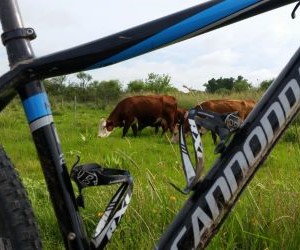Learn how to choose gravel bike geometry by comparing stability, comfort, and performance factors that match your riding style and terrain needs.
WHAT IS THE IMPORTANCE OF BIKE FIT?
Bike fit is often overlooked by beginners, yet it is one of the most critical aspects of cycling performance and health. A proper bike fit ensures that the rider’s body aligns with the machine in a way that maximizes power output, minimizes the risk of injury, and enhances long-term comfort. This article explores why bike fit matters, the physiological and biomechanical factors behind it, and practical adjustments that every cyclist—from casual riders to professionals—should consider.

Why bike fit matters
A bicycle may look simple, but when it comes to performance and health, its geometry and alignment with your body are extremely complex. Bike fit is the process of adjusting saddle height, handlebar reach, cleat position, and posture to match a rider’s physiology. This process directly influences comfort, endurance, and efficiency.
Comfort and injury prevention
Without a proper fit, cyclists often experience discomfort in the knees, hips, neck, and lower back. Over time, repetitive stress from misaligned posture can lead to chronic injuries such as IT band syndrome, patellar tendinitis, or lower back pain. Correcting the fit helps distribute weight evenly, reducing strain on specific joints and allowing longer, pain-free rides.
Performance and efficiency
Performance is about more than power; it’s about sustainable output. A well-fitted bike allows optimal muscle recruitment, meaning your quads, hamstrings, and glutes all contribute effectively. This reduces wasted energy and improves cadence smoothness. Even a small adjustment in saddle height can translate into significant gains in efficiency and reduced fatigue on long rides.
Reduces risk of overuse injuries.
Improves power transfer to the pedals.
Enhances comfort on long rides.
Supports consistent training without setbacks.
The importance of bike fit lies in its dual ability to prevent harm and enhance performance. Ignoring it is like running a marathon in the wrong shoe size: possible, but far from optimal.
Key elements of a good bike fit
A comprehensive bike fit addresses multiple contact points between the rider and the bike. Each adjustment plays a role in balancing efficiency, comfort, and biomechanics. Below are the core elements cyclists should evaluate.
Saddle height and fore-aft position
Saddle height is one of the most influential factors in bike fit. A seat that is too high strains the hamstrings and can cause hip rocking, while a seat that is too low increases knee stress. The fore-aft adjustment fine-tunes your hip-knee-ankle alignment, ensuring power transfer remains consistent across pedal strokes.
Handlebar reach and drop
The handlebar’s position affects both aerodynamics and comfort. Too long a reach can lead to shoulder and neck tension, while too short a reach limits breathing efficiency and handling. Similarly, the drop between the saddle and bars determines how aggressive or upright the riding position feels.
Cleat and pedal alignment
For cyclists using clipless pedals, cleat positioning under the shoe is crucial. Poor alignment can cause knee tracking issues and reduce pedaling efficiency. A slight angular adjustment in cleat rotation can often eliminate knee pain entirely. Pedal stance width, or “Q-factor,” should also align naturally with the rider’s hip width.
Saddle: Controls power transfer and comfort.
Handlebars: Balance aerodynamics and posture.
Cleats: Align joints to prevent strain.
Crank length: Influences cadence and leverage.
Each adjustment interacts with the others, which is why professional fits often take hours. Correcting one element without considering the rest can sometimes worsen imbalances rather than resolve them.
Practical strategies for bike fit
While professional bike fitting services provide the most accurate results, cyclists can take practical steps at home to improve their setup. These strategies focus on testing, gradual adjustments, and listening to your body’s feedback.
DIY adjustments and checks
Simple tools such as a spirit level, plumb line, and trainer can help evaluate fit. Starting with saddle height and ensuring a slight bend in the knee at full extension is a basic yet effective step. Using smartphone apps or recording yourself on a trainer also helps identify posture imbalances.
Signs of a poor fit
Listening to your body is critical. Pain in specific areas often signals poor alignment. Numb hands may indicate handlebar issues, knee pain often relates to saddle height or cleat position, and back discomfort can stem from poor reach settings. Addressing these warning signs early prevents long-term injuries.
When to seek professional fitting
For competitive cyclists or riders logging high mileage, investing in a professional bike fit can pay enormous dividends. Advanced fits use motion capture technology and pressure mapping to tailor adjustments to millimeter precision. This not only enhances performance but also builds confidence on the bike.
Start with saddle adjustments before fine-tuning bars and cleats.
Record short trainer sessions to analyze form.
Track recurring pain points as diagnostic clues.
Consider professional fitting for racing or endurance training.
Ultimately, bike fit is not a one-time task but an evolving process. As riders increase mileage, change equipment, or age, adjustments may be necessary. Viewing bike fit as a dynamic partnership between body and machine ensures long-term health and peak performance.
YOU MAY ALSO BE INTERESTED






